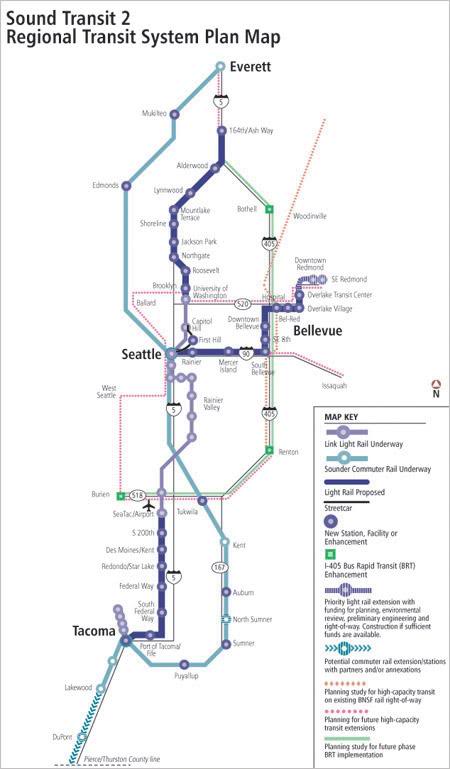 In an extraordinary announcement, Sound Transit revealed that the agency will receive $1.3 billion in Federal loans from the US Department of Transportation (USDOT). The loans come from the Transportation Infrastructure Finance and Innovation Act (TIFIA), which provides incredibly favorable interest rates to transportation agencies across the United States. Sound Transit will pay 2.38% interest under the TIFIA loans as opposed to 5.75% interest through traditional government bonding. For Sound Transit, the loans will help the agency realize a significant cost savings over the life of the loans, between $200 million and $300 million.
In an extraordinary announcement, Sound Transit revealed that the agency will receive $1.3 billion in Federal loans from the US Department of Transportation (USDOT). The loans come from the Transportation Infrastructure Finance and Innovation Act (TIFIA), which provides incredibly favorable interest rates to transportation agencies across the United States. Sound Transit will pay 2.38% interest under the TIFIA loans as opposed to 5.75% interest through traditional government bonding. For Sound Transit, the loans will help the agency realize a significant cost savings over the life of the loans, between $200 million and $300 million.
The Great Recession greatly affected Sound Transit’s planned revenues under the Sound Transit 2 package to the tune of 29%. This meant that the agency had to cut back on the scale of projects or postpone their implementation. This ultimately was a key factor in Sound Transit’s application for the TIFIA loan which sought to reduce some costs–like interest–while increasing spending capacity due to savings. The loan will essentially help fund one-third of the total East Link project cost, but any savings can be spent on other projects.
With that in mind, Sound Transit says that these projects are at the top of their shortlist:
- Deployment of 50,000 more service hours on ST Express buses (of the 100,000 service hours remaining planned for ST2).
- Completion of two South Link stations along the South Link Light rail alignment (Highline Community College Station in Des Moines and Redondo/Star Lake Station in Federal Way).
- Preliminary light rail engineering work could begin on East Link from Overlake to Downtown Redmond and South Link from Federal Way to Tacoma with acquisition of right-of-way.
- Sounder could receive platform extensions and targeted improvements for both Kent Station and Auburn Station.
- New HOV improvements could be constructed in Renton to enhance bus service and a permanent multi-modal transit facility could be built in Edmonds.
A lot of these projects on the list are worthy of additional funding and deployment, but there are two glaring omissions: Graham Street Station in the Rainier Valley and the Northgate Pedestrian Bridge. These two projects would give a bigger bang for the buck over any of the other individual projects mentioned by Sound Transit. Anticipated ridership growth for project cost should be a key metric in deciding how to allocate these funds. And, it’s for this reason that they should rise to the top of the shortlist.
Stephen is a professional urban planner in Puget Sound with a passion for sustainable, livable, and diverse cities. He is especially interested in how policies, regulations, and programs can promote positive outcomes for communities. With stints in great cities like Bellingham and Cork, Stephen currently lives in Seattle. He primarily covers land use and transportation issues and has been with The Urbanist since 2014.






